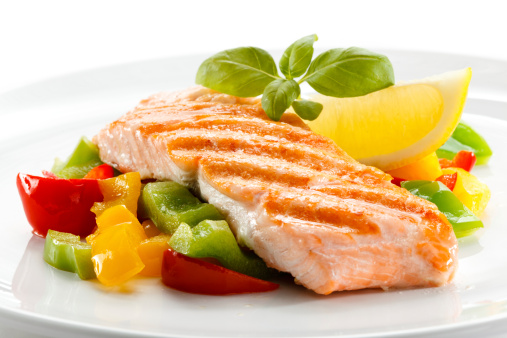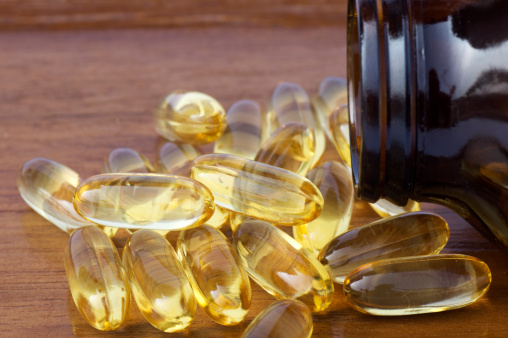Resting on one’s laurels is rarely advisable, and in the case of heart health supplement makers, it’s not even feasible. That’s because there is always new science to uncover behind the supplements they sell, from the tried and true to the pioneering. Then again, maybe they should all just relax, since the most important cardiovascular-support nutrients basically sell themselves. They are just that important to consumer health. But that’s just the point, isn’t it? Manufacturers can’t be passive, because there is nothing more vital to customers than their cardiovascular wellbeing—to improve a product is, potentially, to improve the quality of many lives, and perhaps even extend them.
That’s why we’re going to help bring you up to date, with a look at the latest research and condition-specific heart health insights. This will include information on everything from key high blood pressure remedies to supplements that may benefit stroke risk. In this context, cardiovascular health will refer not just to the heart, but to the consequences of vascular health on everything from energy levels to stroke risk.
Research in Focus
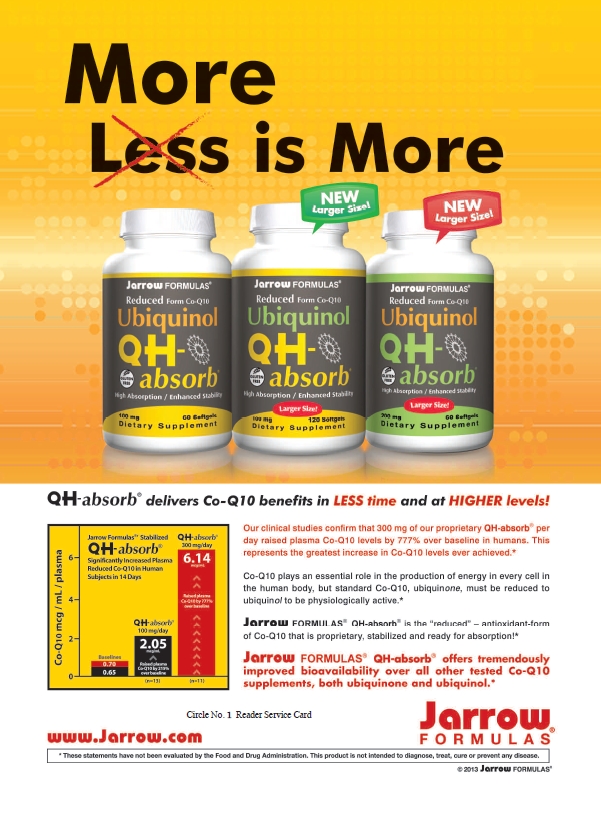 There is no such thing as compiling too much evidence in support of the benefits of dietary supplements. Meanwhile, new associations between heart health and natural ingredients continue to become clear. So, let’s take a look at the latest perspectives on achieving heart health the natural way. We’ll return to many of the following heart health aids later on, to see how they help support different aspects of cardiovascular wellbeing and can thereby serve as “condition-specific” supplements. For now, we’ll discuss the research and its immediate implications, beginning with the highly popular coenzyme Q10 (CoQ10).
There is no such thing as compiling too much evidence in support of the benefits of dietary supplements. Meanwhile, new associations between heart health and natural ingredients continue to become clear. So, let’s take a look at the latest perspectives on achieving heart health the natural way. We’ll return to many of the following heart health aids later on, to see how they help support different aspects of cardiovascular wellbeing and can thereby serve as “condition-specific” supplements. For now, we’ll discuss the research and its immediate implications, beginning with the highly popular coenzyme Q10 (CoQ10).
“We are excited to see new research on CoQ10 and heart health. Researchers at Tulane University reviewed a number of published studies and concluded that CoQ10, especially at doses above 100 mg/day, had significant, positive effects on heart function,” says Angelica Vrablic, Ph.D., manager of nutrition research for Solgar Vitamin and Herb, Leonia, NJ (1). Although the researchers stated that more study is required, they found that CoQ10 may improve the heart’s ejection fraction (i.e., the volume of blood pumped from the heart each cardiac cycle) in patients with congestive heart failure.
One recent study examined the effects of CoQ10, which is essential for energy production in the heart and throughout the body, when it was paired as a supplement with another nutrient. “A four-year trial of CoQ10 and selenium revealed a significant reduction in the risk of dying from cardiovascular disease among supplemented men and women,” says Kira Schmid, N.D., associate director of scientific affairs for Life Extension, Fort Lauderdale, FL. The randomized, double-blinded trial saw 443 Swedish citizens between the ages of 70 and 88 receive a placebo or 200 mcg of selenium per day, along with 100 mg of CoQ10 twice daily for four years (2). According to Schmid, one reason for the benefit may have been the discovered reduction in cardiac biomarker N-terminal proBNP (NT-proBNP), which is elevated in those with congestive heart failure.
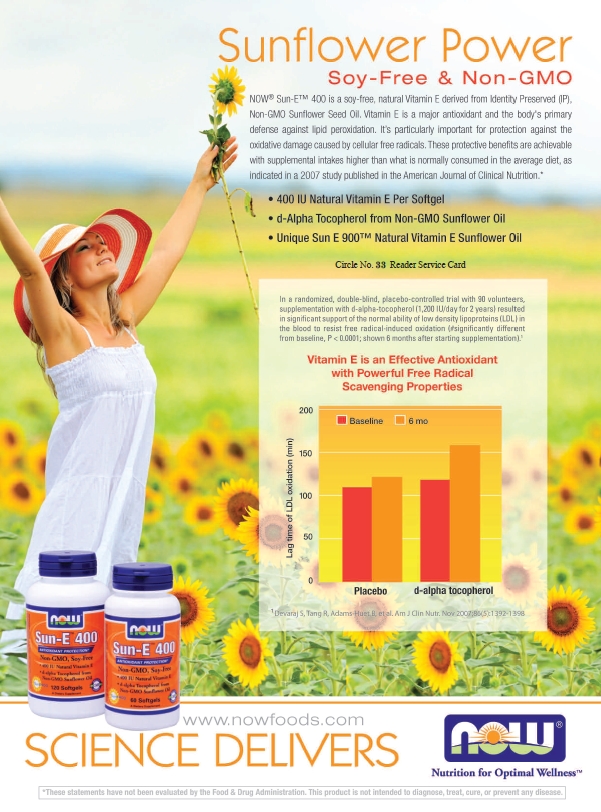 Like CoQ10, the B-complex vitamins are essential for energy production. Now, according to Danielle Citrolo, Pharm.D., registered pharmacist and manager of technical services at Kyowa Hakko USA, Inc., New York, NY, a derivative of vitamin B5 has been found to effectively reduce cholesterol. Pantethine (as Pantesin from Kyowa Hakko) has been found to lower total cholesterol, low-density lipoproteins (LDL, or “bad” cholesterol) and triglycerides, and to raise high-density lipoproteins (HDL, or “good” cholesterol).
Like CoQ10, the B-complex vitamins are essential for energy production. Now, according to Danielle Citrolo, Pharm.D., registered pharmacist and manager of technical services at Kyowa Hakko USA, Inc., New York, NY, a derivative of vitamin B5 has been found to effectively reduce cholesterol. Pantethine (as Pantesin from Kyowa Hakko) has been found to lower total cholesterol, low-density lipoproteins (LDL, or “bad” cholesterol) and triglycerides, and to raise high-density lipoproteins (HDL, or “good” cholesterol).
Pantethine is metabolized from pantothenic acid (vitamin B5). In tandem with another byproduct of vitamin B5’s metabolism called cysteamine, pantethine inhibits acetyl-CoA carboxylase and HMG-CoA reductase. This reduces triglyceride synthesis and favorably modifies LDL metabolism, according to Citrolo. A recent study displayed this beneficial effect of pantethine on LDL in healthy North American adults (3). Citrolo adds that pantethine also has a mild anti-platelet aggregation effect, further contributing to a decreased risk of cardiovascular disease (CVD).
In other B-complex vitamin news, Erin Stokes, N.D., director of education at MegaFood, Derry, NH, reports that researchers have made a connection between B12 and certain types of stroke. “It is now more widely recognized that vitamin B12 deficiency is extremely common, particularly in the elderly population,” she says. In a recent study, 30% of lacunar stroke (blockage of one of the arteries supplying the brain with blood) patients were B12 deficient, as were 10-15% of the general elderly population, according to Stokes. An increased incidence of fatigue and depression subsequent to lacunar stroke was found in B12-deficient patients (4).
Sticking with vitamins for the moment, Jolie Root, LPN, LNC, nutritionist and educator for Carlson Laboratories, Arlington Heights, IL, cites a September 2012 study in the Journal of Nutrition revealing lower vitamin D levels to be inversely correlated with greater waistline circumference, higher fasting glucose levels, higher fasting insulin levels, higher triglyceride levels and higher LDL cholesterol levels. The study also found that adequate vitamin D in the blood meant healthier HDL levels in a middle-aged group of Chinese individuals (5).
Neil E. Levin, CCN, DANLA, nutrition education manager at NOW Foods, Bloomingdale, IL, offers some more potential reasons that vitamin D should be considered a cardiovascular nutrient. Vitamin D is often linked with proper bone formation, and Levin explains how this connection may also involve cardiovascular health. "Bone health implies proper utilization of circulating calcium, which may avoid the mineral depositing in arteries or peripheries where it doesn’t belong," he says. Beyond bone health, Levin cites the European Food Safety Agency's opinion that vitamin D can impact "normal muscle health (the heart is a muscle), immunity (infections can impact heart health), inflammation (arterial health link), reproduction, and cellular health."
Inflammation, as we will hear repeatedly, is a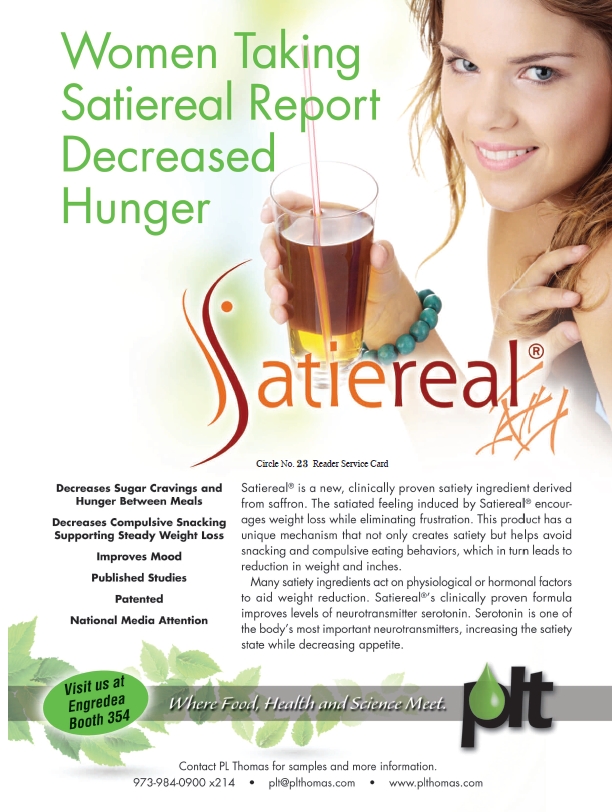 prime culprit in virtually every serious cardiovascular condition that qualifies as disease. To stem the tide of the chronic inflammation, antioxidants can often be employed to the long-term benefit of cardiovascular health. One example is pterostilbene, a phytochemical antioxidant found in botanicals like blueberries and the heartwood of Pterocarpus marsupium.
prime culprit in virtually every serious cardiovascular condition that qualifies as disease. To stem the tide of the chronic inflammation, antioxidants can often be employed to the long-term benefit of cardiovascular health. One example is pterostilbene, a phytochemical antioxidant found in botanicals like blueberries and the heartwood of Pterocarpus marsupium.
Matthew Budoff, MD, professor of medicine at David Geffen School of Medicine, director of cardiac CT at Harbor-UCLA Medical Center, and consultant for ChromaDex, Irvine, CA, cites a recent clinical trial involving a pterostilbene ingredient (pTeroPure from ChromaDex). Conducted at the University of Mississippi Medical Center, it examined multiple potential benefits of pterostilbene, including for blood pressure, body weight and cholesterol. The double-blind, placebo-controlled trial included 80 adults at an average age of 54 who all had high cholesterol. The majority were women, and most had high blood pressure. Participants received the ingredient with or without a grape extract, or a placebo for six to eight weeks.
At the end of the study, Budoff says, those who’d taken a high dose of pterostilbene averaged significant blood pressure reductions (7.8 mmHg systolic, 7.3 mmHg diastolic). Those who took pterostilbene without grape extract saw an increase in LDL cholesterol, while those who took grape extract as well did not see an increase, and those who were on cholesterol-lowering medication saw less of an increase. Participants not on cholesterol-lowering medication saw minor body weight reductions with pterostilbene (6).
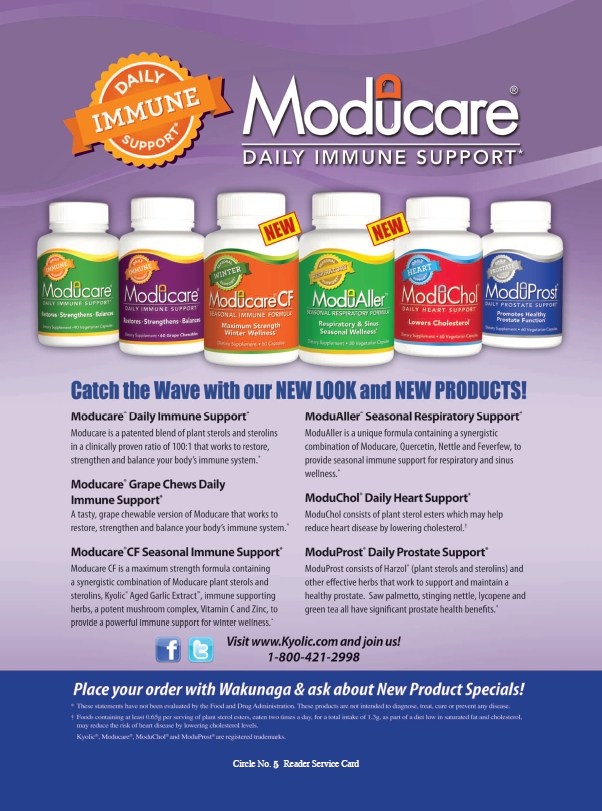 Some high blood pressure remedies called diuretics work by ridding the body of excess sodium. In contrast, much of the effect that antioxidants can have on blood pressure may be attributed to their effect on endothelial cells, which are described as the first line of defense against coronary artery disease by Frank Schönlau, scientific director for Horphag Research, Hoboken, NJ. “These cells serve as the ‘traffic cop’ for blood flow, directing blood to the appropriate areas of the body such as the heart, brain, muscles or digestive system to support the body’s actions,” he says. If endothelial cells are malfunctioning, coronary arteries can narrow or become blocked, causing plaque to build up and possibly resulting in a heart attack.
Some high blood pressure remedies called diuretics work by ridding the body of excess sodium. In contrast, much of the effect that antioxidants can have on blood pressure may be attributed to their effect on endothelial cells, which are described as the first line of defense against coronary artery disease by Frank Schönlau, scientific director for Horphag Research, Hoboken, NJ. “These cells serve as the ‘traffic cop’ for blood flow, directing blood to the appropriate areas of the body such as the heart, brain, muscles or digestive system to support the body’s actions,” he says. If endothelial cells are malfunctioning, coronary arteries can narrow or become blocked, causing plaque to build up and possibly resulting in a heart attack.
Individuals that take Pycnogenol, a proprietary extract from French maritime pine bark with antioxidant properties, may see lower systolic and diastolic blood pressure, even if their current blood pressure is only marginally high, according to Schönlau. The “stickiness” of blood platelets, which determines their tendency to aggregate, has been shown to decrease with Pycnogenol in clinical trials. A recent study on Pycnogenol involved those who already had stable coronary artery disease (7). Schönlau notes that in this study, the ability of Pycnogenol to help dilate arteries was remarkable, because patients were already taking many heart medications. This improvement in endothelial function meant that arteries were better able to “give way” to blood flow.
Representing half of the eight compounds that are classified as vitamin E, tocotrienols have been found to lower LDL levels and support healthy cholesterol levels already within a normal range, according to Gene Bruno, MS, MHS, director of category management for Twinlab Corporation, New York, NY. Though more detail will be given on tocotrienols later, Bruno cites a recent study on rabbits that may have uncovered the mechanism behind their benefits.
Rabbits were fed a high-cholesterol diet for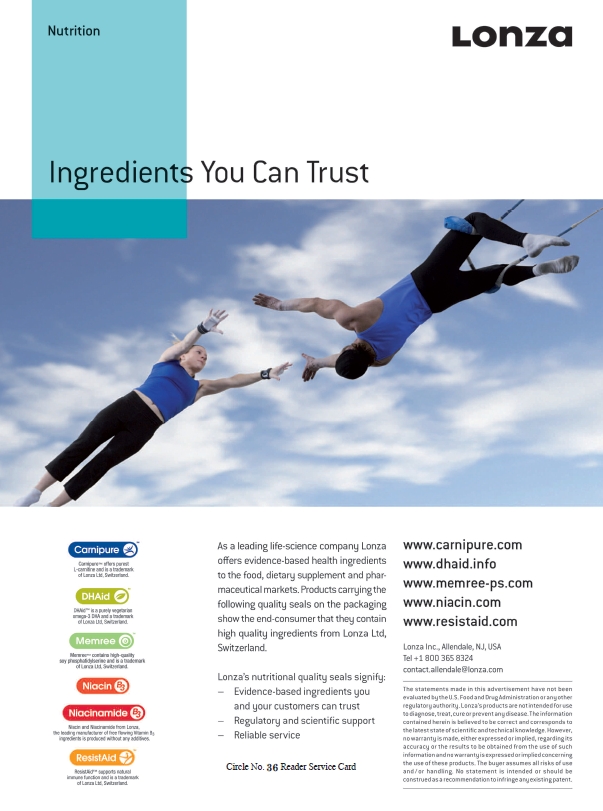 60 days, and received alpha-, gamma- or delta-tocotrienol for the last 30 days. “The results were that the cholesterol levels were the lowest for those rabbits supplemented with gamma-tocotrienol. Heart function and blood flow exhibited significantly improved recovery with gamma- and alpha-tocotrienol, but not with delta,” Bruno says. Cardiovascular damage due to heart attack was also reduced with gamma- and alpha-tocotrienol. The researchers found that these vitamin E isomers caused specific genes to express themselves differently, such that some cholesterol-related proteins were reduced while others increased (8).
60 days, and received alpha-, gamma- or delta-tocotrienol for the last 30 days. “The results were that the cholesterol levels were the lowest for those rabbits supplemented with gamma-tocotrienol. Heart function and blood flow exhibited significantly improved recovery with gamma- and alpha-tocotrienol, but not with delta,” Bruno says. Cardiovascular damage due to heart attack was also reduced with gamma- and alpha-tocotrienol. The researchers found that these vitamin E isomers caused specific genes to express themselves differently, such that some cholesterol-related proteins were reduced while others increased (8).
Found in red wine and well-known as an antioxidant, resveratrol also may achieve its benefits in part through gene activation. It has been found, according to Joseph Maroon, Ph.D., scientific advisor to Reserveage Organics, Gainesville, FL, to be a potent activator of SIRT1, an aging-related gene. “SIRT1 is one of the 363 key genes upregulated during caloric restriction, which leads to a number of biological adaptations to prolong lifespan,” says Maroon. This and other genetic pathways allow resveratrol to decrease inflammatory molecules like nuclear factor kappa B, TNF-alpha, IL-1 and IL-8. Maroon says this can lead to the suppression of COX-1 and COX-2, which are the enzymes targeted by over-the-counter, non-steroidal anti-inflammatory drugs (NSAIDs). By reducing LDL cholesterol oxidation and slowing the pro-inflammatory cascade, resveratrol can cut down on atherosclerotic plaques.
At an international resveratrol conference held in 2012 at the University of Leicester, UK, researchers reported their findings on resveratrol’s cardiovascular and cancer benefits in human subjects. Juan Carlos Espin, Ph.D., of CEBAS-CSIC and Morales Meseguer University Hospital in Spain spoke about the benefits of low-dose resveratrol supplementation for one year on 150 individuals with heart disease. “This group showed a mixture of grape-based polyphenols along with 8 mg of resveratrol could significantly reduce inflammatory and artery-clogging factors that could lead to or worsen cardiovascular disease,” says Maroon (9).
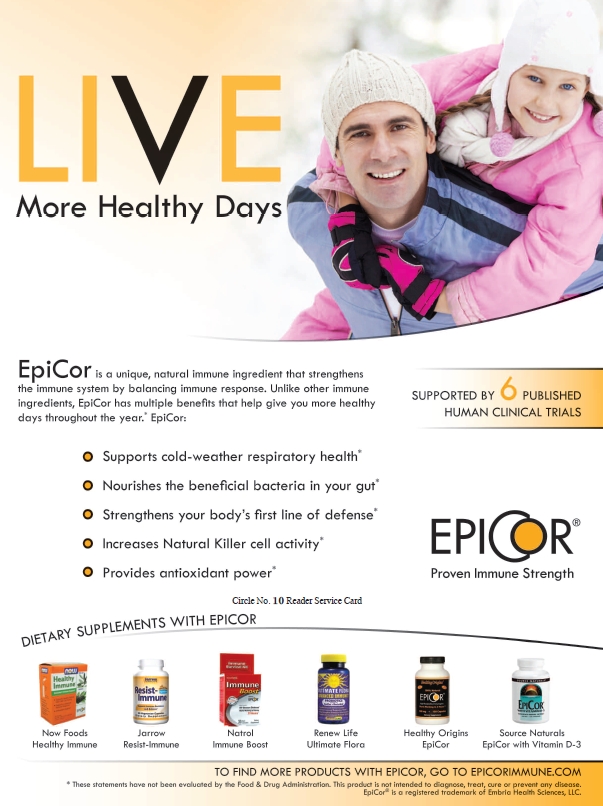 Finally on the antioxidant front, there is the cacao bean. “Dark chocolate, packed full of healthy polyphenols, has significant and scientifically proven health benefits,” says Maroon. Most candy bars, however, are composed of processed sugar and have little cacao content, the real source of chocolate’s heart benefits. Therefore, concentrated chocolate flavanol extracts (CCFEs) have come into play. Flavanols are a type of polyphenol, and they have been associated with improved blood vessel function when derived from cacao. According to Maroon, flavanols from chocolate can increase nitric oxide production, which then helps to dilate blood vessels and allow more efficient blood flow. A study into these benefits found improved blood pressure and a reduction in fasting blood glucose levels (10).
Finally on the antioxidant front, there is the cacao bean. “Dark chocolate, packed full of healthy polyphenols, has significant and scientifically proven health benefits,” says Maroon. Most candy bars, however, are composed of processed sugar and have little cacao content, the real source of chocolate’s heart benefits. Therefore, concentrated chocolate flavanol extracts (CCFEs) have come into play. Flavanols are a type of polyphenol, and they have been associated with improved blood vessel function when derived from cacao. According to Maroon, flavanols from chocolate can increase nitric oxide production, which then helps to dilate blood vessels and allow more efficient blood flow. A study into these benefits found improved blood pressure and a reduction in fasting blood glucose levels (10).
Keeping blood glucose levels in check and improving responsiveness to insulin is crucial to avoiding diabetes, which itself can wreak havoc on cardiovascular health. Levin equates the predictive power of many heart risk factors to flipping a coin. But, he says, "the risk of getting cardiovascular disease has been demonstrated to be far greater if one has diabetes. So lack of proper blood sugar control should be considered a true risk factor for cardiovascular disease."
One way to achieve the goal of blood sugar control is to control the glycemic impact of foods. Michael T. Murray, N.D., director of product development and education for Natural Factors Nutritional Products, Inc., Everett, WA, details the effects of a proprietary fiber matrix (PGX from Natural Factors) on body weight, food consumption, glucose, insulin and glucagon-like peptide-1 (GLP-1). Each of these factors were analyzed in Zucker diabetic rats that were treated for 12 weeks with normal rodent feed supplemented with a control fiber substance (cellulose), PGX, sitagliptin or PGX plus sitagliptin.
Sitagliptin is an oral diabetes medication that blocks the breakdown of GLP-1, which is naturally broken down by the body within two minutes after formation, according to Murray. PGX is said to increase GLP-1 release, so in combination with sitagliptin, the study found the effects were greater than the use of either by itself. Significant blood sugar-lowering effects over both the short-term and long-term were found (11).
Omega-3 fatty acids have yet to be 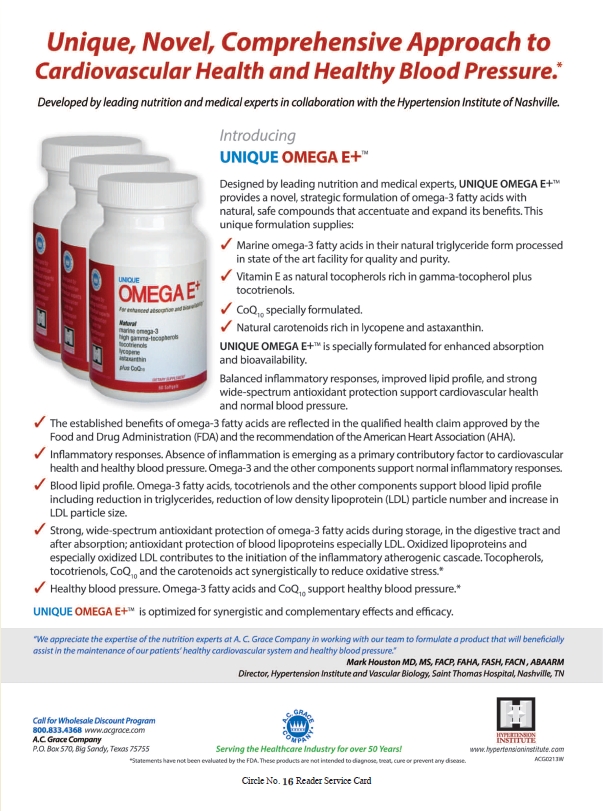 mentioned, and we will learn more of their highly regarded place in heart health circles soon. But Becky Wright, communications and marketing manager for Aker BioMarine Antarctic US, Issaquah, WA, wants us to know specifically about the strides that have been made in understanding krill oil as a source of omega-3s. Krill is a source of naturally phospholipid-bound omega-3s, which Wright says makes them highly bio-available to humans: “In other words, krill omega-3s will get to the tissues and organs that need them most—the heart and surrounding arteries and tissues.”
mentioned, and we will learn more of their highly regarded place in heart health circles soon. But Becky Wright, communications and marketing manager for Aker BioMarine Antarctic US, Issaquah, WA, wants us to know specifically about the strides that have been made in understanding krill oil as a source of omega-3s. Krill is a source of naturally phospholipid-bound omega-3s, which Wright says makes them highly bio-available to humans: “In other words, krill omega-3s will get to the tissues and organs that need them most—the heart and surrounding arteries and tissues.”
The high bio-availability of krill supplements allows for smaller and fewer pills, which helps avoid digestive upset in consumers. By virtue of its commitment to substantiating krill’s health benefits, Wright says her company sponsors in vitro, in vivo and human clinical trials with phospholipid-bound EPA and DHA from krill oil.
According to Root, new research shows fish oil reduces levels of inflammation in individuals with chronic heart failure (12). “The results indicate circulating levels of tumor necrosis factor-alpha, interleukin 1 and interleukin 6 were significantly decreased after fish oil supplementation.”
New findings on aged garlic extract come by word of Jay Levy, director of sales for Wakunaga of America Company, Mission Viejo, CA. Published in the European Journal of Clinical Nutrition, the study suggests that 480 mg of AGE per day can lower systolic blood pressure by up to 12 mgHg (13).
Other options for heart health keep popping up in the research. Last year, according to Jonny Bowden, Ph.D., CNS, member of the scientific advisory board of Barlean’s, Ferndale, WA, a study showed substantial reductions in blood pressure through supplementation with compounds derived from olive leaf. The reduction was dose dependent, meaning a larger dose created a greater result, though both doses that were tested produced a reduction in blood pressure.
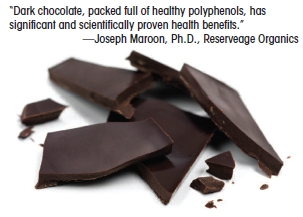 Naturally occurring peptides, the most studied of which derive from the muscle of the bonito fish, have been found to inhibit the angiotensin-converting enzyme (ACE), according to Murray. These anti-ACE peptides thus prevent angiotensin II, a substance that causes large blood vessels to constrict and the kidneys to retain sodium, from forming. This benefit occurs without the side effects seen in ACE inhibitor drugs, according to safety studies, and the peptides do not lower blood pressure in those with normal blood pressure levels.
Naturally occurring peptides, the most studied of which derive from the muscle of the bonito fish, have been found to inhibit the angiotensin-converting enzyme (ACE), according to Murray. These anti-ACE peptides thus prevent angiotensin II, a substance that causes large blood vessels to constrict and the kidneys to retain sodium, from forming. This benefit occurs without the side effects seen in ACE inhibitor drugs, according to safety studies, and the peptides do not lower blood pressure in those with normal blood pressure levels.
A reason for this discrepancy may be that the mechanism of action of bonito peptides differs from that of the drugs, Murray explains, stating, “The drugs basically indiscriminately block ACEs by interfering with their action, while the bonito anti-ACE peptides interact much differently.” ACEs convert angiotensin I to angiotensin II by removing a small peptide, and drugs directly block this action.
To round out our research update, let us remind ourselves that although the best supplements may do a lot of good, they can’t do everything. “While individual nutrients and natural compounds such as omega-3 fatty acids and CoQ10 can be used, their efficacy is limited to the affected individual risk factors,” says a team from A.C. Grace Company, Big Sandy, TX, that includes Mark C. Houston, MD, MS, and Andreas M. Papas, Ph.D. The doctors allude to their review of synergistic formulations with natural anti-inflammatory, antioxidant and anti-hypertensive compounds that can provide novel, safe, effective and comprehensive approaches to cardiovascular health (14). They cite, as an example, a formula comprised of omega-3 fatty acids, tocopherols and tocotrienols (vitamin E), CoQ10 and carotenoids.
Synergy is the focal point at Dr. Rath Research Institute, 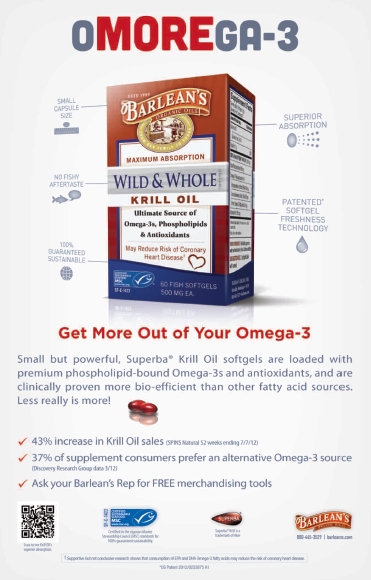 Santa Clara, CA, where Aleksandra Niedzwiecki, Ph.D., is CEO and director of research. They’ve determined that “teams” of nutrients are required in order to optimize benefits for our body’s cells and organs. She states, “This nutritional supplement team has been built around key components such as vitamin C, lysine, proline, vitamin B6, copper and other nutrients, which are essential in maintaining healthy connective tissue, and thereby a healthy heart and blood vessel system.”
Santa Clara, CA, where Aleksandra Niedzwiecki, Ph.D., is CEO and director of research. They’ve determined that “teams” of nutrients are required in order to optimize benefits for our body’s cells and organs. She states, “This nutritional supplement team has been built around key components such as vitamin C, lysine, proline, vitamin B6, copper and other nutrients, which are essential in maintaining healthy connective tissue, and thereby a healthy heart and blood vessel system.”
Beyond just supplements, Budoff shares his perspective on putting it all together for heart health. Physicians are likely already treating the cardiovascular health of your customers as a top priority. So, working in natural supplements amid a regimen of medications and the lifestyle advice physicians give can sometimes be a challenge. But Budoff says that it is worth it. “I believe that combination therapy, or the use of multiple therapies to treat a condition, can be very effective,” he says. For his patients with high blood pressure, he advises dietary changes, exercise and supplementation, as well as prescription medication when necessary. Supplements, he adds, don’t necessarily allow individuals to stop taking their medicine, but they can be used as worthy complements.
Take This for That
It may sound like a simple proposition to support heart health with supplements. It’s just one organ, right? Well, for one thing, as we’ve noted, there’s more to cardiovascular well-being than the four-chambered ticker at the center of it all.
Heart health is a broad category, with many subcategories that must often be addressed, explains Trisha Sugarek MacDonald, BS, MS, director of research and development/national educator for Bluebonnet Nutrition Corporation, Sugar Land, TX. She lists some of the primary areas of concern: maintaining healthy lipid levels (i.e., cholesterol), healthy blood pressure levels, healthy triglyceride levels and healthy homocysteine levels; cardiovascular antioxidant protection and other heart health-related issues (e.g., inhibiting visceral fat accumulation).
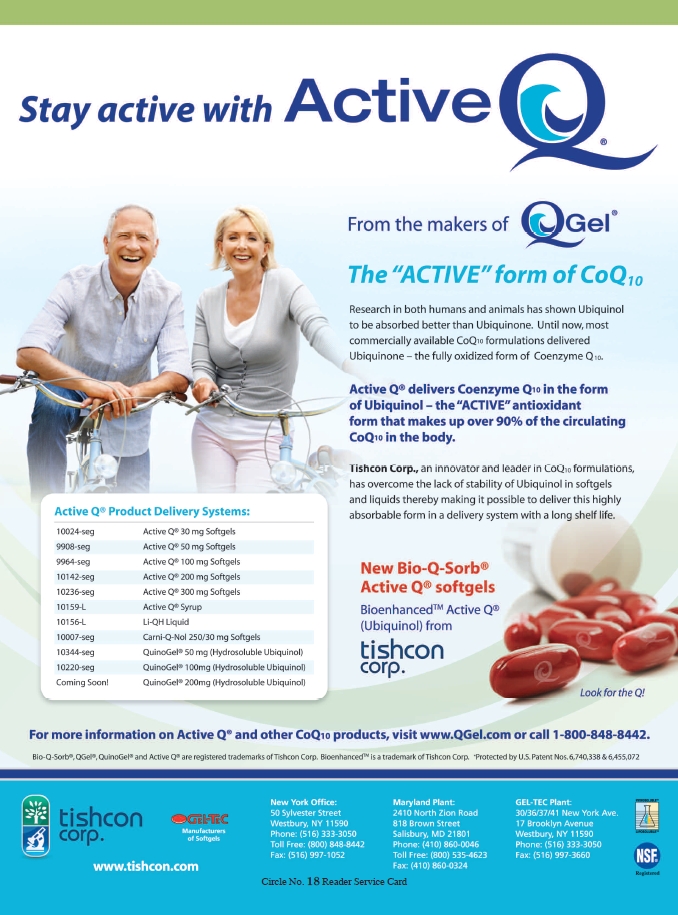 Each of these areas is interrelated. But many of your customers, with advice from their doctors, will need to focus on improving specific conditions to stay healthy. “Knowing your specific risk factors and targeting them with specific nutrients allows you to better protect your health,” says Schmid.
Each of these areas is interrelated. But many of your customers, with advice from their doctors, will need to focus on improving specific conditions to stay healthy. “Knowing your specific risk factors and targeting them with specific nutrients allows you to better protect your health,” says Schmid.
Sugarek MacDonald begins by describing the use of several ingredients for cholesterol management. Red yeast rice is one tried and true option in this subcategory. Plant sterols in general can inhibit the absorption of dietary cholesterol, as well as the reabsorption of cholesterol from the gastrointestinal tract (Sugarek MacDonald notes that the liver recycles 90% of cholesterol daily). Plant sterols are thought to displace cholesterol in bile salt micelles in the lower region of the small intestine, before the uptake of cholesterol can take place, she explains. Bruno notes that, particularly in combination with a low-fat diet, phytosterols and phytostanols have been shown to reduce total and LDL cholesterol levels and to support cholesterol levels already within the normal range, but have not been shown to increase HDL.
Sugarek MacDonald also describes how pantethine stays in the bloodstream for up to 16 hours, supporting energy and lipid metabolism while present. Tocotrienols, gamma-tocotrienol in particular, have been shown to suppress the production of HMG-CoA, which is involved in LDL production, according to Houston and Papas. Niacin has also been shown to be effective at maintaining healthy cholesterol levels, Schmid adds.
Both niacin and niacinamide are required by all living cells, states Kevin Owen Ph.D., Nafta, head of technical marketing and scientific affairs for Lonza Inc., Allendale, NJ. “More than 40 biochemical reactions dependent on them have been identified,” he says. They are components of coenzymes that are involved in the metabolism of carbohydrates, lipids and proteins.
Though niacin can be synthesized by the body, supplementation certainly has its place. “The amino acid tryptophan is a precursor of niacin. This endogenous synthesis, comprising 13 steps, is not very efficient. Studies in man have shown that approximately 60 mg of tryptophan are required to produce 1 mg of niacin,” Owen says. Additionally, niacin and niacinamide often have low bioavailability in food, and poor access to these nutrients is a concern in cereal/maize-based diets. Many know niacin for its pharmaceutical applications, though it is also available as a supplement. “In higher dosages, it has been shown to raise levels of HDL, or ‘good’ cholesterol, and lower triglyceride levels in the blood,” Owen says, adding that is has also been found to lower elevated LDL.
Of course it is not just cholesterol levels that 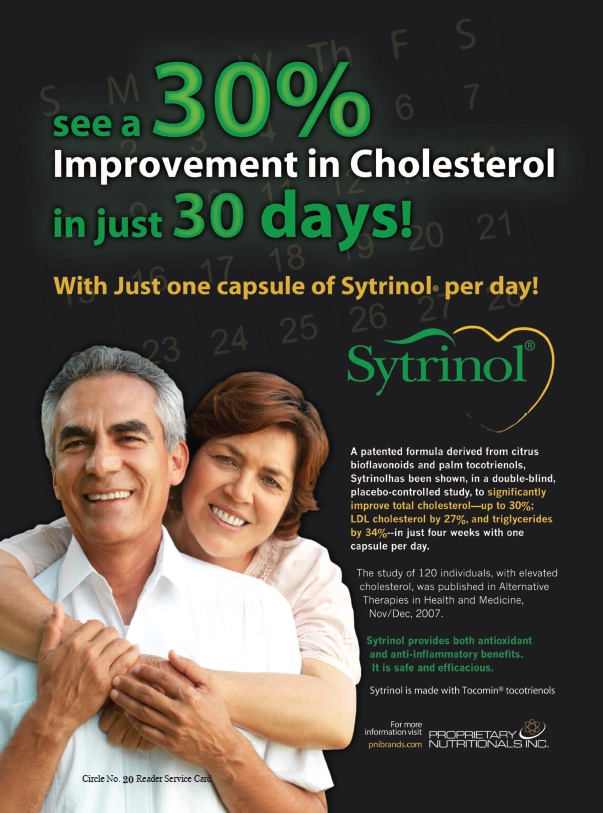 are important; the oxidative status and particle size of LDL are also crucial. LDL are the major cholesterol-carrying lipoproteins, and the smaller the particles, the stronger the association with coronary artery disease and myocardial infarction, independent of age, gender and relative weight, Owen says. Supplemental DHA, an omega-3 fatty acid, has been linked with a significant increase in LDL particle size in overweight men. In one study, according to Owen, no size difference was observed with supplementation of EPA, its omega-3 counterpart.
are important; the oxidative status and particle size of LDL are also crucial. LDL are the major cholesterol-carrying lipoproteins, and the smaller the particles, the stronger the association with coronary artery disease and myocardial infarction, independent of age, gender and relative weight, Owen says. Supplemental DHA, an omega-3 fatty acid, has been linked with a significant increase in LDL particle size in overweight men. In one study, according to Owen, no size difference was observed with supplementation of EPA, its omega-3 counterpart.
Statin drugs are the most prevalent route to lowering one’s cholesterol in the general population, and Bowden notes that those on statins should be aware of the potential for CoQ10 depletion. He says, “The statin drugs cut the body’s production of cholesterol by putting up a kind of ‘dam’ at the base of the mevalonate pathway, but CoQ10 is one of the many compounds that’s also made by that same pathway, so when you block it, you block the production of one of the heart’s most vital nutrients.”
There are branded citrus extracts available, Levin says, that contain natural compounds able to impact the liver's production of cholesterol. These extracts are well-tolerated by individuals who may see side effects from statin drugs. This is of obvious benefit, and also indicates a different mechanism of action for these extracts than statin drugs, Levin explains.
Speaking of CoQ10, Bowden also notes its capacity to provide antioxidant protection. “CoQ10 acts as an antioxidant in both the mitochondria and lipid membranes by scavenging free radicals either directly or in conjunction with tocopherol,” he says. Though Budoff speaks in the context of pterostilbene, all powerful antioxidants are helpful in maintaining heart health. He says, “Antioxidants are being explored as dietary supplements and additives for the prevention of many diseases, including cardiovascular disease and metabolic syndrome.”
Though past vitamin E research has been focused on the alpha-tocopherol isomer because of its prevalence in food fortification and supplements, evidence is showing that it can deplete gamma-tocopherol, as well as perhaps other tocopherols and tocotrienols, according to Houston and Papas. Major clinical trials like the Heart Outcomes Prevention Evaluation (HOPE) Study have called into question the efficacy of alpha-tocopherol alone for heart health.
Now evidence is emerging that the other vitamin E compounds can induce beneficial responses, including specialized antioxidant functions, anti-inflammation, cell signaling and others, say Houston and Papas. One benefit of particular significance is synergy, both among vitamin E compounds and with other nutrients. “Tocopherols plus tocotrienols, especially in combination, function as strong antioxidants and thus help reduce oxidation of omega-3 both in the digestive system and after absorption,” they say.
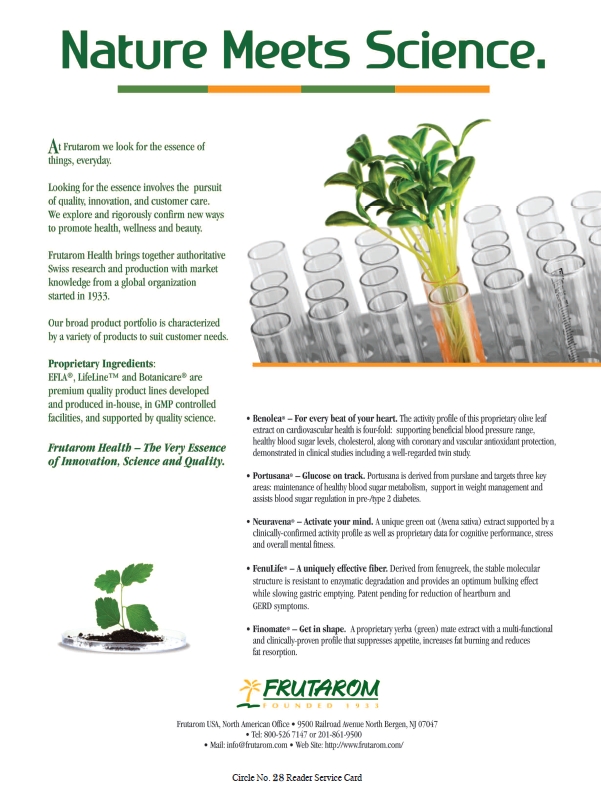 The various vitamin E compounds have areas in which they specifically excel. Gamma-tocopherol is more effective than alpha at quenching nitrogen radicals, which contributes to inflammation. Tocotrienols, especially gamma and delta tocotrienol, also exhibit anti-inflammatory properties. All forms of vitamin E, according to Houston and Papas, exhibit mild anti-coagulant properties.
The various vitamin E compounds have areas in which they specifically excel. Gamma-tocopherol is more effective than alpha at quenching nitrogen radicals, which contributes to inflammation. Tocotrienols, especially gamma and delta tocotrienol, also exhibit anti-inflammatory properties. All forms of vitamin E, according to Houston and Papas, exhibit mild anti-coagulant properties.
The A.C. Grace team also points to carotenoids for help in this area. “Carotenoids such as lycopene and astaxanthin have shown antioxidant and anti-inflammatory properties relevant to improved endothelial function, lipoprotein profile and oxidation,” they say. These compounds have also been linked to heart disease risk reduction through influencing LDL degradation and composition.
A host of different nutrients is associated with ginkgo biloba. Ginkgoflavonglycosides and terpene lactones are conventionally included in ginkgo formulations, according to Steve Holtby, president and CEO of Soft Gel Technologies, Inc. (SGTI), Los Angeles, CA. But through a specialized purification process, bioflavonoids that offer antioxidant activity can also be included.
For inclusion in an antioxidant supplement regimen, Sugarek MacDonald tags a few more amino acid, vitamin, mineral and herbal antioxidants: beta-carotene, vitamin C, the B vitamins 6, 12 and folic acid, citrus bioflavonoids, L-carnitine, cayenne extract, garlic extract, green tea, ginger, hawthorn berry, gugulipid extract and taurine.
As an antioxidant, it is not surprising to learn that a lack of vitamin C can result in arterial plaque in animals, according to Levin. He stresses the importance of bioavailability when dealing with vitamin C intake. The levels achieved in the blood can be limited by many factors, such as gut inflammation, low sodium diets (sodium transports vitamin C in the body), intake of salicylates like aspirin as well as insulin resistance. These factors can be mitigated, Levin says, by turning to bioavailalbe formulations, like the pairing of vitamin C with alpha lipoic acid.
Taurine, as it turns out, is both nutritionally important and versatile when it comes to heart health. “Taurine is an amino acid derivative that is conditionally essential, which means the body can synthesize it if sufficient amounts of amino acids and B vitamins are available,” says Sugarek MacDonald. Inside the cell, taurine hems in potassium and magnesium while keeping excess sodium out, leading to its track record of supporting healthy blood pressure. L-arginine, another conditionally essential amino acid, participates in the production of nitric oxide, according to Sugarek MacDonald. Therefore, it can help with the elasticity of arterial walls and increasing vasodilation to allow for better blood flow.
Bruno cites hawthorn extract for its ability to benefit congestive heart failure. He notes that the German Commission E Monographs on herbal medicine state that hawthorn extract can result in an increased heart work tolerance and a decrease in blood pressure. Bruno also describes the use of an enzymatically hydrolyzed milk protein, C-12 peptide, for inhibiting ACE. “ACE influences the kidney’s retention of salt and water, both of which help elevate/impact blood pressure,” he says. Stokes add that for blood pressure, consumers should consider magnesium as an option. “Magnesium is a common mineral deficiency in the United States. Its role in supporting healthy blood pressure has been clearly demonstrated, but it is often overlooked,” she says.
Niedzwiecki describes a formula of micronutrients “supporting an optimum contraction and relaxation cycle of the smooth muscle cells, elasticity of the blood vessels and bio-energy production in the cells that build blood vessel walls and other body organs that affect blood pressure (i.e., adrenals).” Such micronutrients include vitamin C, lysine, magnesium, green tea extract and garlic extract. She adds, “This formula contains the amino acid arginine, required for production of nitric oxide and called the ‘vascular relaxing factor,’ and thereby it can decrease vascular wall tension, keeping blood pressure in the normal range.”
Levy explains why it is that garlic, specifically the aged garlic extract supplement form, can help with blood pressure. “The antihypertensive properties of the sulfur compounds in aged garlic extract have been linked to stimulation of intracellular nitric oxide and hydrogen sulfide production, and blockage of angiotensin II production, which in turn promote vasodilation and a reduction in blood pressure,” he says.
For maintaining triglyceride levels already within the normal range, Schmid says that omega-3 fatty acids are a good option. Elevated triglycerides, as Owen explains, are an established risk factor for CVD. Supplementation with a DHA ingredient (DHAid from Lonza) has been shown to support healthy triglyceride levels in individuals with normal lipid levels. After eight weeks, supplementation with the ingredient resulted in a 23% decrease in triglyceride levels, and a reduction in the ratio of triglycerides to HDL cholesterol, which Owen explains is a predictor of myocardial infarction. The same DHA ingredient has also been shown to improve an individual’s omega-3 index, a risk factor for cardiovascular health that measures the ratios of fatty acids in red blood cells.
Vitamins B6, B12 and folic acid can help in maintaining homocysteine levels in a healthy range, according to Schmid. Sugarek MacDonald reaffirms this, stating, “It is well known that these three B vitamins in tandem are required to act as cofactors in the homocysteine cycle to help maintain low levels of homocysteine, thereby supporting optimal heart health.”
Chiming in further on folic acid, Bruno says early research showed vitamin therapy with this B-complex vitamin was supportive of heart health, but later studies showed conflicting evidence. “In any case, research overwhelmingly supports folic acid’s role in helping maintain healthy homocysteine levels already within a normal range,” he says.
Schmid, meanwhile, asserts that many of the homocysteine studies that don’t find a benefit from B vitamins are not structured well enough to detect significant heart risk reduction, as they rely only on modest homocysteine reductions. They also fail to account for other risk factors of heart disease. So, she says it is not surprising that moderate improvement of one risk factor is not effective in lowering overall cardiovascular risk.
Another consideration must be added to the homocysteine discussion, according to Levin. Coenzyme forms of the B vitamins are required to convert homocysteine back into methionine as part of the ATP production cycle. Phosphorylated B6 and methylated B12 and folic acid are required, and the body creates these by using phosphorous and methyl groups from compounds like SAMe. "Methyl groups are also present in choline, TMG, and DMG, so these are often added to homocysteine formulas to assure that we have the cofactors needed to convert the vitamins to their higher biosynthetic forms," says Levin.
It is also important to consider the effect of body weight, and even more crucially, visceral fat, on long-term cardiovascular health. A study with over 12,000 participants from the third NHANES study presented at the August 2012 meeting of the European Society of Cardiology in Munich indicated that belly fat is a more dire indicator of cardiovascular risk than obesity in general. In fact, those with a normal Body Mass Index but high amounts of belly fat are actually at risk. “Insulin resistance, high blood glucose, and hormone imbalance can all contribute to belly fat,” says Schmid.
|
On Fish and Fish Oil Fish and marine oil supplements, lest those in the supplement industry forget, are not the only sources of health-giving omega-3 fatty acids. Whole seafood as a regular element of the diet is the way much of the world stays heart healthy. William Castelli, M.D., medical director of Metro West Medical Center in Framingham, Massachusetts, and a consultant to the National Fisheries Institute, also emphasizes that fish oil supplements bought over the counter sometimes present issues. For one, there was the news about elevated levels of carcinogenic PCBs (Polychlorinated Biphenyls) in fish oils sold at drug stores. Castelli advises consumers to be sure that fish oil packaging clearly states that the product is free of PCBs, as well as mercury.
Eating whole fish, meanwhile, has its advantages. They offer a leaner source of protein than beef, pork, lamb and others, which tend to raise cholesterol. To reduce heart disease risk, Castelli counsels patients to eat at least two servings of seafood per week, and to also seek out sources with high omega-3 content, like sardines and farm-raised salmon. He shares a personal anecdote of one of his favorite nutritionists, Ancel Keys. Every time he ran across him at heart health conferences, he could be seen eating a can of sardines, and ended up living to the ripe old age of 100. |
There are other reasons for weight gain in this area. Says Stokes, “We live in a society where many people are overwhelmed by high stress levels. The chronic increase in cortisol associated with chronic stress has also been correlated with an increase in belly fat.”
When fat is deposited around our abdomen and internal organs, secretions of important hormones and pro-inflammatory cytokines are increased, Holtby explains, stating, “These chemicals increase oxidative stress and inflammation in the body, which then leads to a cascade of problems, such as increased insulin production.”
Bowden summarizes that deep-layer visceral fat and belly fat is metabolically active, destructive and inflammatory tissue that poses the real threat in obesity. “Sadly, I suspect there will be a huge number of products geared to target ‘dangerous belly fat,’ and I fear the market will jump in way before there’s good science about what to do about visceral fat and whether any specific supplements (or drugs) will work,” he says. For her part, Stokes believes that appropriate adrenal supplements can help deal with the stress component that can lead to weight gain.
Sugarek MacDonald suggests licorice flavonoid oil for its nutrigenomic properties. This means it can boost weight management efforts that include proper diet and exercise by optimizing fat metabolism. It works to influence the expression of genes that increase fatty acid breakdown and decrease fatty acid synthesis, allowing a healthier body fat composition to take hold.
Holtby says there is significant clinical support for the capacity of an anti-angiogenic herbal composition (Viscerol AI from Optipure) to reduce visceral fat. The ingredient targets adipose tissue by inhibiting the formation of new blood vessels, which are necessary for the creation of visceral fat cells.
Over and above other factors, Murray believes insulin resistance is now emerging as a leading risk factor in atherosclerosis and CVD. “In fact, if we look at the big picture, it’s easy to conclude that insulin resistance is by far the biggest factor contributing to an increased risk of heart disease in most North Americans,” he says. With impaired sensitivity to the effects of the body’s own insulin, the key action of insulin to drive glucose from blood into the cells cannot be performed optimally.
Murray describes a few of the insidious effects of insulin resistance as they relate to heart health. Elevated blood sugar levels are linked with an increase in the attachment of glucose to receptor proteins, which harms feedback mechanisms. The example he gives is of LDL receptors on the surface of a liver cell becoming damaged by glucose attachment, cutting off the liver cell from the feedback it needs to stop producing excess cholesterol. Furthermore, even though blood sugar levels are high, the glucose deficiency within cells caused by insulin resistance can cause the pancreas to release more insulin into the blood. Murray explains that a high level of insulin in the blood promotes atherosclerosis by stimulating smooth muscle cell proliferation in arterial walls, leading to thickening, stiffening and narrowing of the artery.
Insulin resistance can also increase platelet aggregation, increasing clot risk, says Murray. The soy-based, purified enzyme nattokinase has been shown to increase fibrinolytic activity, or the breaking down of blood clots, according to Holtby.
Reducing risks like these is of obvious importance to heart health, and dietary fiber is one way to do so. “The effectiveness of any fiber on reducing appetite, blood sugar and cholesterol is based directly on the amount of water the fiber is able to absorb and the degree of thickness or viscosity the fiber imparts when in the stomach and intestine,” Murray says. A special process allows natural fibers to be transformed into a highly viscous and soluble state with PGX, magnifying the blood sugar-stabilizing effects of fiber. He lists other benefits of the ingredient including a reduced glycemic impact of any food or beverage, a lowering of blood cholesterol and triglycerides, reduced after-meal blood glucose levels when taken with food and an increase in the insulin-regulating hormone GLP-1.
Cinnamon extract is an option for blood sugar control as well, according to Schmid. She also turns our attention back to the lesser known heart risk factor of low vitamin D levels, which can obviously be addressed with D3 supplementation.
Efficient energy conversion is essential for proper heart function, Owen emphasizes. L-carnitine plays a major role in this process. The heart’s tissue has limited capacity for the storage and synthesis of fatty acids, and needs to have them supplied by the blood. Before these long-chain fatty acids can be broken down inside mitochondria, they must be carried past the mitochondrial membranes by L-carnitine. “Due to this fact, it is not surprising that the L-carnitine concentration in the heart is the highest in the body,” Owen says.
“Desert Island” Heart Support
We’ve seen how addressing heart health from many angles at once can be of great benefit. But hypothetically, if consumers could only take but one heart-healthy supplement for the rest of their lives, what do our experts think it should be? Which is the most generally protective?
“Although myself and a few of my colleagues in integrative health may have different ‘top 10’ lists for heart health supplements, virtually all of us agree on omega-3s, magnesium and CoQ10, and many of us concur on resveratrol and curcumin as well,” says Bowden. CoQ10, he says, is made by every cell in the body, is needed for cellular energy, and serves as “fuel” for the heart. We make less of it as we age, making it a prime candidate for supplementation.
CoQ10 supports the normal physiologic function of the heart, Vrablic says, in part by promoting healthy circulation through myocardial tissue, or the muscular wall of the heart. Ubiquinol is the reduced form of CoQ10, and Schmid says it acts as a powerful antioxidant and excels at preventing the oxidation of LDL cholesterol. “Ubiquinol is used to make ATP, our body’s basic unit of cellular energy. ATP is critical for our energy-hungry heart cells to function properly.”
Omega-3s, Bowden says, are among the most anti-inflammatory molecules around, and most people do not get enough of them. “That is probably the main mechanism by which they reduce the risk for heart disease, since inflammation is emerging as the ‘ground zero’ promoter of heart disease (not to mention a host of other diseases to which it contributes),” he says.
Although the other supplements he mentions previously are important, Bowden says when push comes to shove, that he’d choose omega-3s above the others for their multiple benefits, not the least of which is its anti-inflammatory benefit.
Murray further details the profound effects of omega-3s. “Supplementation with EPA and DHA has little effect on cholesterol levels but does lower triglyceride levels significantly and produces myriad additional beneficial effects, including reduced platelet aggregation, improved function of the lining of blood vessels, improved arterial flexibility, improved blood and oxygen supply to the heart and a mild effect in lowering blood pressure,” he says.
In addition to supporting normal blood clotting processes and keeping arteries clear and flexible, Wright asserts omega-3s do benefit cholesterol status. “Omega-3s offer a holistic approach to heart health. They have been shown to support normal blood pressure and cholesterol levels. And they appear to promote a regular heart rhythm,” she says. Root explains the mechanism behind this last benefit, saying, “They reduce susceptibility to abnormal heart rhythm, probably by stabilizing the electrophysiology of the heart muscle cell membranes.”
|
Heart Health on the Shelves The companies interviewed for this feature offer the following heart healthy supplements.
A.C. Grace Company: Unique Omega E+, Unique E Mixed Tocopherols Concentrate, Unique E Tocotrienols, Unique Omega Krill Oil. Aker BioMarine Antarctic US: Superba krill oil (phospholipid bound omega-3s). Barlean’s: Fresh Catch fish oils, Flaxseed oils, Wild & Whole Alaskan Salmon oil, Olive Leaf Complex (liquid or capsules). Bluebonnet Nutrition Corp.: Trimology Licorice Flavonoid Oil, CholesteRice Red Yeast Rice, Niacin (Flush producing), Plant Sterols, Policosanol, Cellular Active Ubiquinol, Heart Antioxidant Formula, Taurine, EPAX Omega-3 Heart Formula. Carlson Laboratories: Very Finest Fish Oil, Super D Omega 3, Elite Omega 3 Gems, HeartBeat Elite, Ubiquinol, Super Daily D3, Tri B. ChromaDex: pTeroPure (pterostilbenes from blueberries). Dr. Rath Research Institute: Cardiovascular Health and Longevity Synergy Formula, Healthy Heart Energy Synergy Formula, Healthy Cholesterol Synergy Formula, Healthy Blood Pressure Synergy Formula. Horphag Research: Pycnogenol (maritime pine bark extract). Kyowa Hakko USA, Inc.: Pantesin. Life Extension: Super Ubiquinol CoQ10, Super Omega 3, Cardio Peak with Standardized Hawthorn and Arjuna, Vitamin D3, Cinsulin with InSea2 and Crominex, Natural BP Management, Advanced Lipid Control. Lonza Nutrition: DHAid DHA, Carnipure L-carnitine, Niacin, Niacinamide. MegaFood: MegaFood Vegan B12, MegaFood Magnesium, MegaFood Cal, Mag & Potassium, MegaFood Adrenal Strength. Natural Factors: PGX, RxOmega-3 Factors, PeptACE. NOW Foods: NOW Cholesterol Pro, NOW Blood Pressure Health, Homocysteine Regulators, AlphaSorb C, Effer-C, Relora, Super Cortisol Support, CoQ10, natural cocoa powder ReserveAge Organics: Resveratrol, Resveratrol with Pterostilbene, Resveratrol Age-Defying Tonic, Active Ubiquinol CoQ10, CocoaWell Cocoa Science, CocoaWell True Energy, CocoaWell CoQ10. Soft Gel Technologies: CoQsol, CoQsol-CF, Sytrinol, EZ Mega 3; from sister company OptiPure—Viscerol AI, Gbe 24/6, Ginkgo Complete Liquid, nattokinase. Solgar Vitamin and Herb: Megasorb CoQ-10, Vegetarian CoQ-10 Vegetable Capsules, Ubiquinol, Sublingual Liquid B-12 with B-Complex, Methylcobalamin (Vitamin B12), Pyridoxal-5-Phosphate (P-5-P), Wild Alaskan Full Spectrum Omega Softgels, Omega-3 Fish Oil Concentrate Softgels, Homocysteine Modulators Vegetable Capsules. Twinlab Corporation: Blood Pressure Success, Cholesterol Success, Twinsorb CoQ10 100, MaxiLIFE Rice Tocotrienol. Wakunaga of America: Kyolic Formula 100 – Cardiovascular, Kyolic Formula 104 – Cholesterol, Kyolic Formula 106 – Healthy Heart, Kyolic Formula 107 – Phytosterols, Kyolic Formula 108 – Total Heart Health, Kyolic Formula 109 – Blood Pressure Health, Kyolic Formula 110 – CoQ10, Kyolic Omega-3, Kyolic One Per Day Cardiovascular, Kyolic Reserve Cardiovascular, Kyolic Cardio-Logic, ModuChol. |
Bruno is also of the opinion that omega-3s are the most generally protective supplement for heart health, and Holtby notes that in 2000, the U.S. Food and Drug Administration allowed a qualified health claim for dietary supplements containing EPA and DHA. It reads, “Supportive but not conclusive research shows that consumption of EPA and DHA omega-3 fatty acids may reduce the risk of coronary heart disease.” Holtby states it unequivocally: “No other dietary supplement has as much research demonstrating its benefits for overall health and for heart health, specifically.”
Citing the protection against coronary plaque they afford, and their potential blood pressure and cholesterol benefits, Budoff argues that antioxidants in general are where consumers should place their focus when it comes to high blood pressure remedies. Along with pterostilbene, he points to aged garlic extract as a proven heart-health aid.
Of course, Niedzwiecki points out that if consumers can only have one supplement, it couldn’t hurt to make it one that contains many nutrients. A “heart multivitamin” like the ones her company specializes in can help, she says, to provide optimum stability of the vascular system. A product such as this, she adds, “can be taken as a cardiovascular multivitamin to augment heart health and longevity, or in combination with any of the other synergy formulas to optimize targeted health benefits.”
Hearty Lifestyles
In the news and on the pages of research journals, there is always ink being spilled about the latest trends and correlations regarding cardiovascular health. Here are a few recent headlines.
“Healthy” hearts at risk. A paper published in the November 2012 issue of JAMA that received national media coverage shows that many healthy individuals are still at risk for cardiovascular disease later in life (15). “The problem here comes from thinking a ‘healthy’ heart is one that beats in a body with low cholesterol,” says Bowden. He predicts we’ll see more evidence that traditional measures like cholesterol aren’t very accurate, but that measures like triglyceride to HDL ratio, inflammatory measures like c-reactive protein and other markers of inflammation and stress can tell us much about the present and future health of the heart.
Schmid agrees that it is an issue of proper risk factor assessment. “Checking cholesterol, blood pressure and smoking status is not a complete assessment of cardiovascular risk. A more comprehensive analysis would include measuring levels of omega-3 fatty acids, vitamins D, as well as the hormones estrogen and testosterone,” she says.
Taking the long view is something that consumers must come to be educated about, as well. “Heart disease is a slow and progressive process that begins in childhood and comes to fruition later in life. Therefore, having a ‘healthy’ heart (seemingly defined in this study as normal cholesterol and blood pressure levels) in middle-age does not mean that all will be fine 10, 15 or 20 years later,” says Bruno. It is also important for consumers to understand the role of prevention. “These insights provide further support for maintaining preventative and ongoing daily vitamin and supplement routines—even for those without current health concerns,” says Schönlau.
Strokes in young people. Statistics from a recent study show more strokes are occurring among the younger portion of the population (16). What is the cause, and what is the solution? Schmid attributes the trend to the increased incidence of obesity, diabetes and high blood pressure, which themselves are often due to poor diet and a sedentary lifestyle. Diet, exercise and supplements, also, can help avoid people to avoid these issues.
Specifically, Wright says, “Omega-3s really should be considered ‘lifecycle’ nutrients because they are critical for every age group, from infants to seniors. Supplementing early could help many consumers avoid several health issues down the road, including heart attack, stroke and even Alzheimer’s.”
Knowing one’s cholesterol and blood pressure status at an early age is important for establishing a baseline for comparison later in life, according to Citrolo. “I think that awareness of a healthy lifestyle and cardiovascular disease needs to be promoted as early as possible—elementary school,” she says.
Sleep habits and heart risk. A report that analyzed over 4,000 teenagers found that the one-third with the worst quality of sleep were most likely to be overweight, have unhealthy blood pressure and have elevated cholesterol (17). “Sleep is an active process. The body manages its repair systems, its regenerative mechanisms, its vast array of immune functions and other physical activities while you slumber,” says Holtby. The pulse and breathing rate slow, allowing the heart and lungs to rest, as tissues become oxygenated. In short, sleep is a physiological need, and sleep deprivation can harm heart health long-term.
Though studies like this may make this connection, Schmid points out that poor cardiovascular and general health could simply lead to sleeping problems. In any event, a healthy diet, exercise, and stress management will support better sleep, while reducing risk factors for heart disease. For sleep support, she recommends supplements including melatonin and milk peptides. WF
References
1. A.D. Fotino, et al., “Effect of coenzyme Q10 supplementation on heart failure: a meta-analysis,” Am J Clin Nutr. Dec. 5, Epub ahead of print (2012).
2. U. Alehagen, et al., “Cardiovascular mortality and N-terminal-proBNP reduced after combined selenium and coenzyme Q10 supplementation: A 5-year prospective randomized double-blind placebo-controlled trial among elderly Swedish citizens,” Int J. Cardiol. May 22, Epub ahead of print (2012).
3. J. Rumberger, et al., “Pantethine, a derivative of vitamin B5, used as a nutritional supplement, favorably alters low density lipoprotein cholesterol metabolism in low to moderate cardiovascular risk North American subjects: a triple-binded placebo and diet controlled investigation,” Nutr. Res. 31(8), 608-615 (2011).
4. M. Huijts, et al., “Association of Vitamin B12 Deficiency with Fatigue and Depression after Lacunar Stroke,” PLoS ONE 7(1), e30519 (2012).
5. X. Yin, et al., “Serum 25(OH)D is inversely associated with metabolic syndrome risk profile among urban middle-aged Chinese population,” Nutrition Journal 11, 68 (2012).
6. DM Riche, et al., “Impact of pterostilbene on metabolic parameters in humans. Poster presentation at: American Heart Association 2012 Scientific Sessions on High Blood Pressure Research,” September 20, 2012.
7. F. Enseleit, “Effects of Pycnogenol on endothelial function in patients with stable coronary artery disease: a double-blind, randomized, placebo-controlled, cross-over study,” Eur Heart J 33(13), 1589-1597 (2012).
8. S. Das, et al., “Tocotrienols confer resistance to ischemia in hypercholesterolemic hearts: insight with genomics,” Mol Cell Biochem. 360(1-2), 35-45 (2012).
9. J. Tomé-Carneiro, et al., “Grape Resveratrol Increases Serum Adiponectin and Downregulates Inflammatory Genes in Peripheral Blood Mononuclear Cells: A Triple-Blind, Placebo-Controlled, One-Year Clinical Trial in Patients with Stable Coronary Artery Disease,” Cardiovasc Drugs Ther. Dec 8., Epub ahead of print (2012).
10. S. Almoosawi, et al., “The effect of polyphenol-rich dark chocolate on fasting capillary whole blood glucose, total cholesterol, blood pressure and glucocorticoids in healthy overweight and obese subjects,” Br J Nutr 103(6), 842–50 (2010).
11. R.A. Reimer, et al., “Sitagliptin reduces hyperglycemia and increases satiety hormone secretion more effectively when used with a novel polysaccharide in obese Zucker rats,” J. Nutr. 142(10), 1812-20 (2012).
12. W. Xin, et al., “Effects of fish oil supplementation on inflammatory markers in chronic heart failure: a meta-analysis of randomized controlled trials,” BMC Cardiovasc Disord. 12, 77 (2012).
13. K. Reid, et al., “Aged garlic extract reduces blood pressure in hypertensives: a dose-response trial,” Eur J Clin Nutr. Nov. 21, Epub ahead of print (2012).
14. A.M. Papas and M. Houston, “The synergistic potential of natural anti-inflammatory and antioxidant compounds in the prevention, management and treatment of cardiovascular disease and hypertension,” Anti-Aging Medical News, Fall 2012, 10-14.
15. J.T. Wilkins, et al., “Lifetime Risk and Years Lived Free of Total Cardiovascular Disease,” JAMA. 308(17), 1795-1801 (2012).
16. “More strokes occurring in younger age groups,” NBCNews.com, http://vitals.nbcnews.com/_news/2012/10/10/14348188-more-strokes-occurring-in-younger-age-groups?lite, accessed Jan. 3, 2012.
17. “Teens’ poor sleep tied to heart risk factors,” NBCNews.com, http://www.msnbc.msn.com/id/49263116/ns/health-heart_health/, accessed Jan. 3, 2012.
Published in WholeFoods Magazine, February 2013


